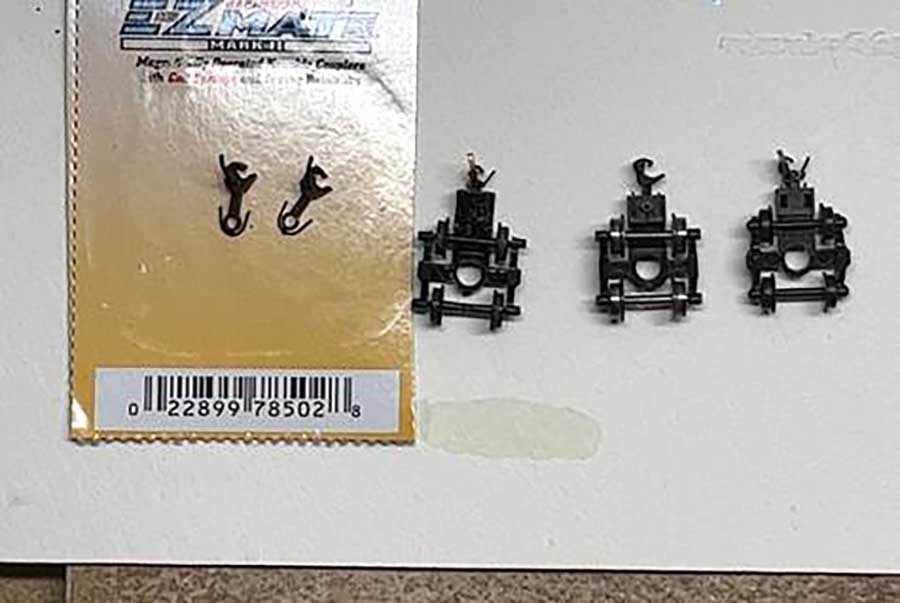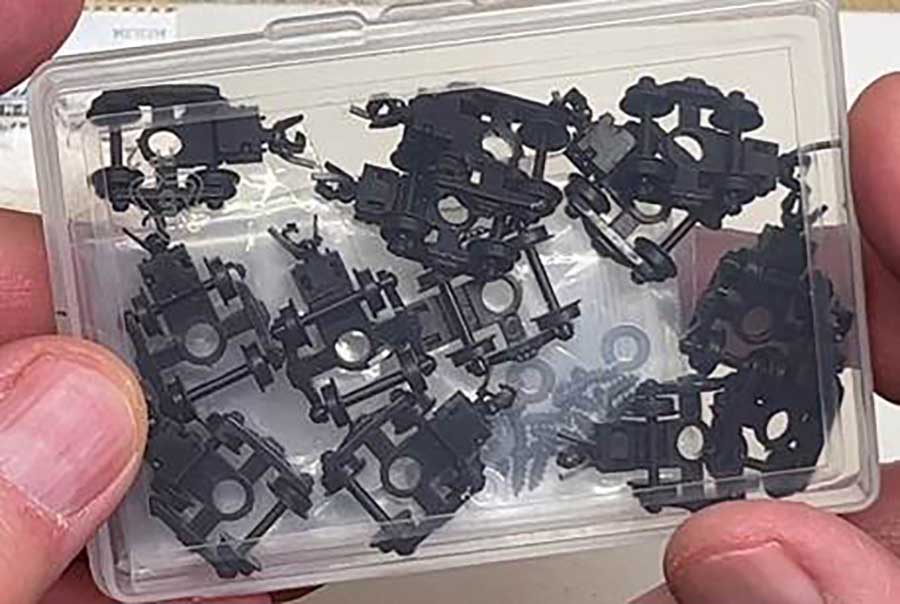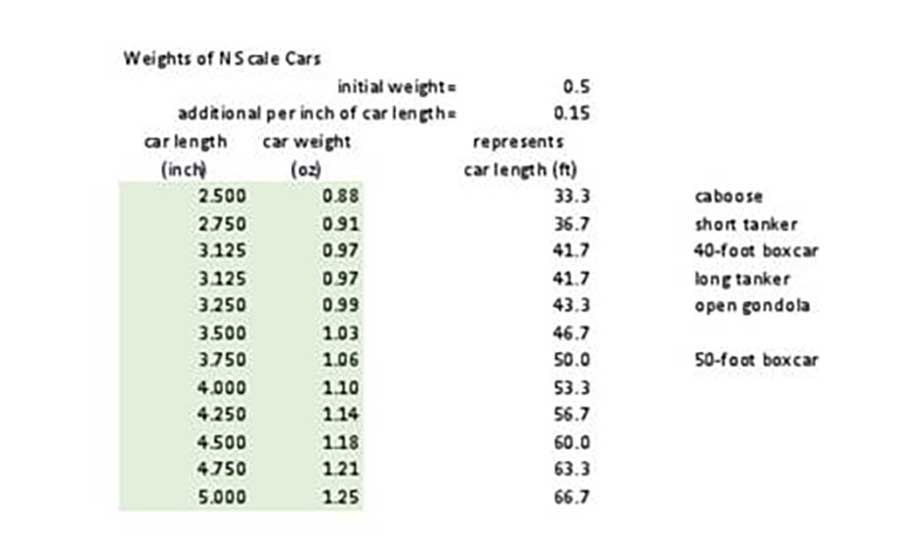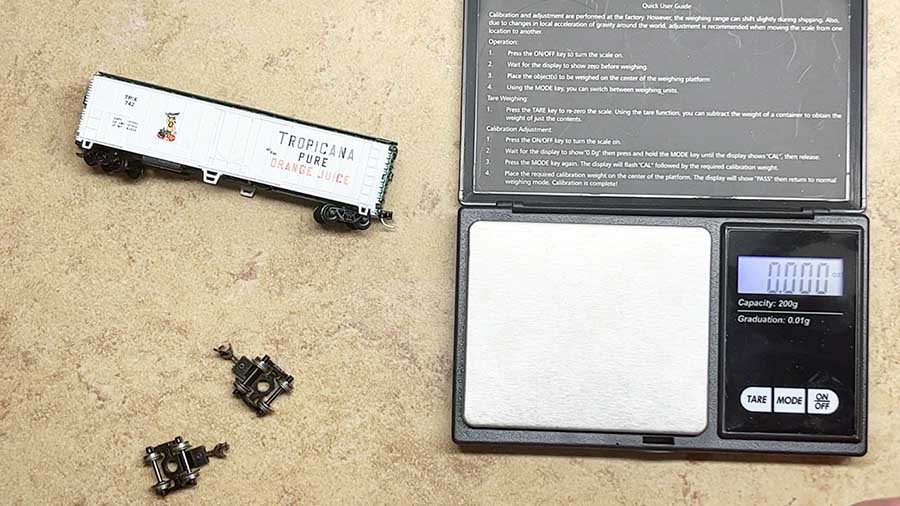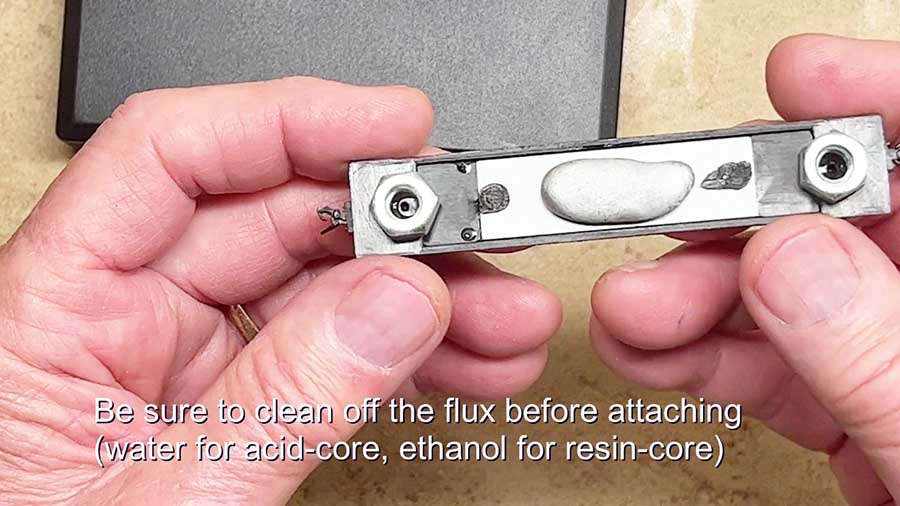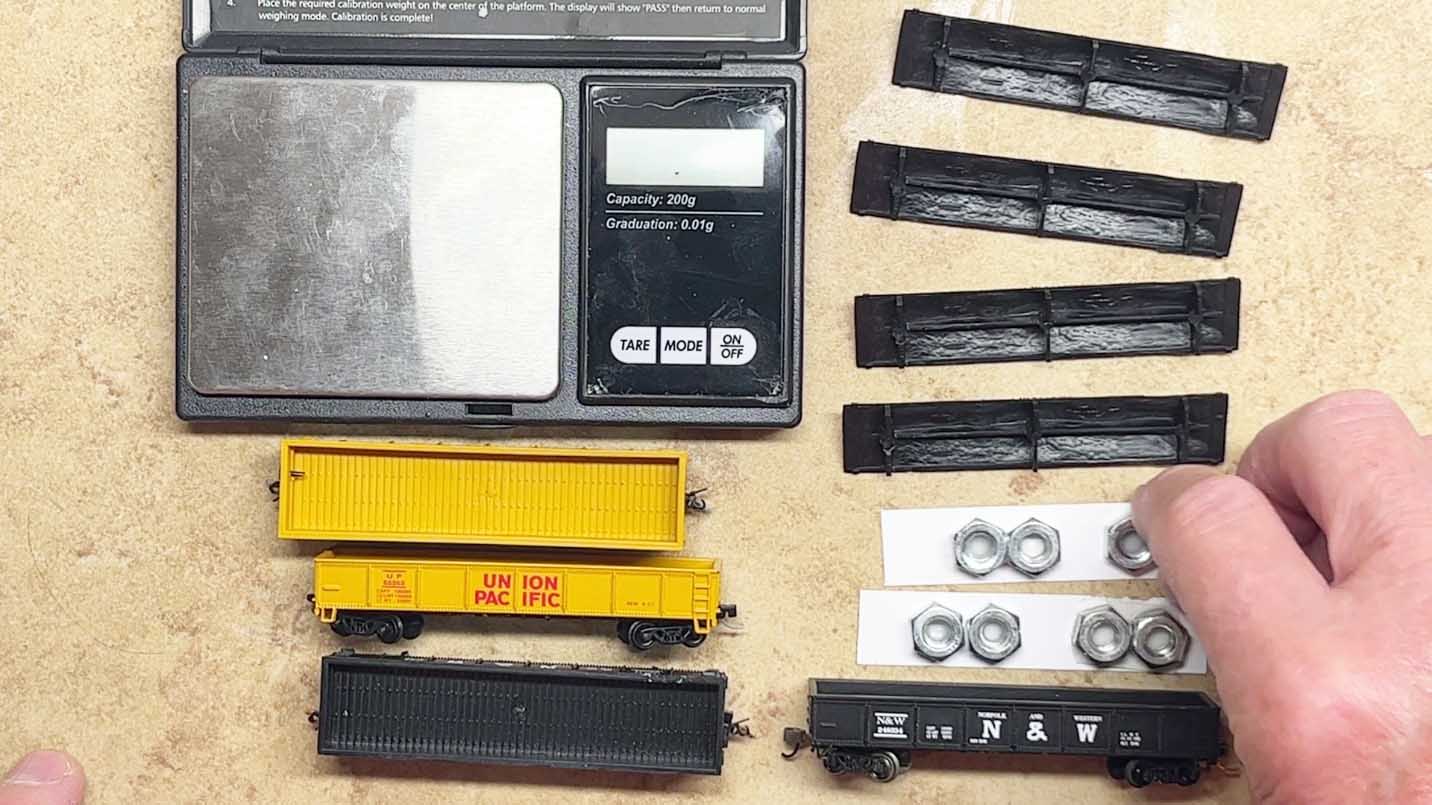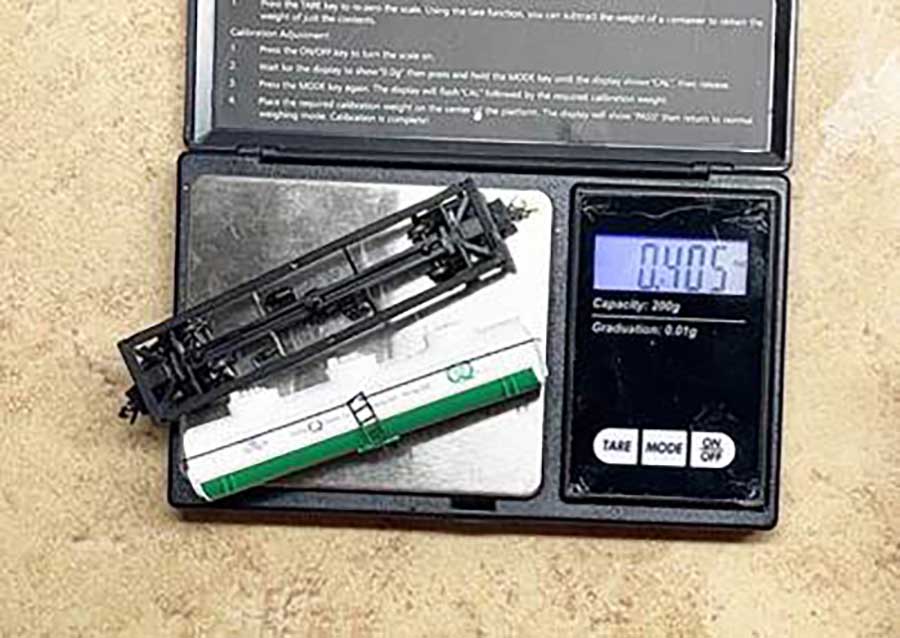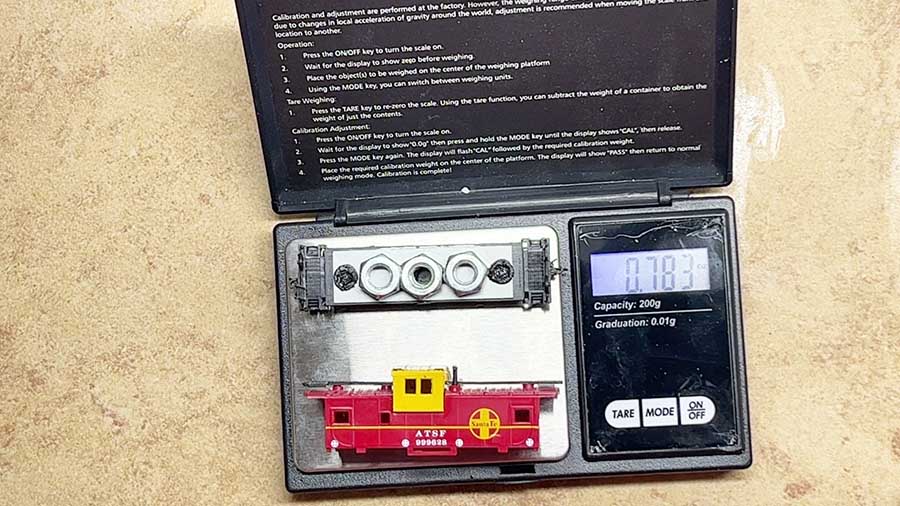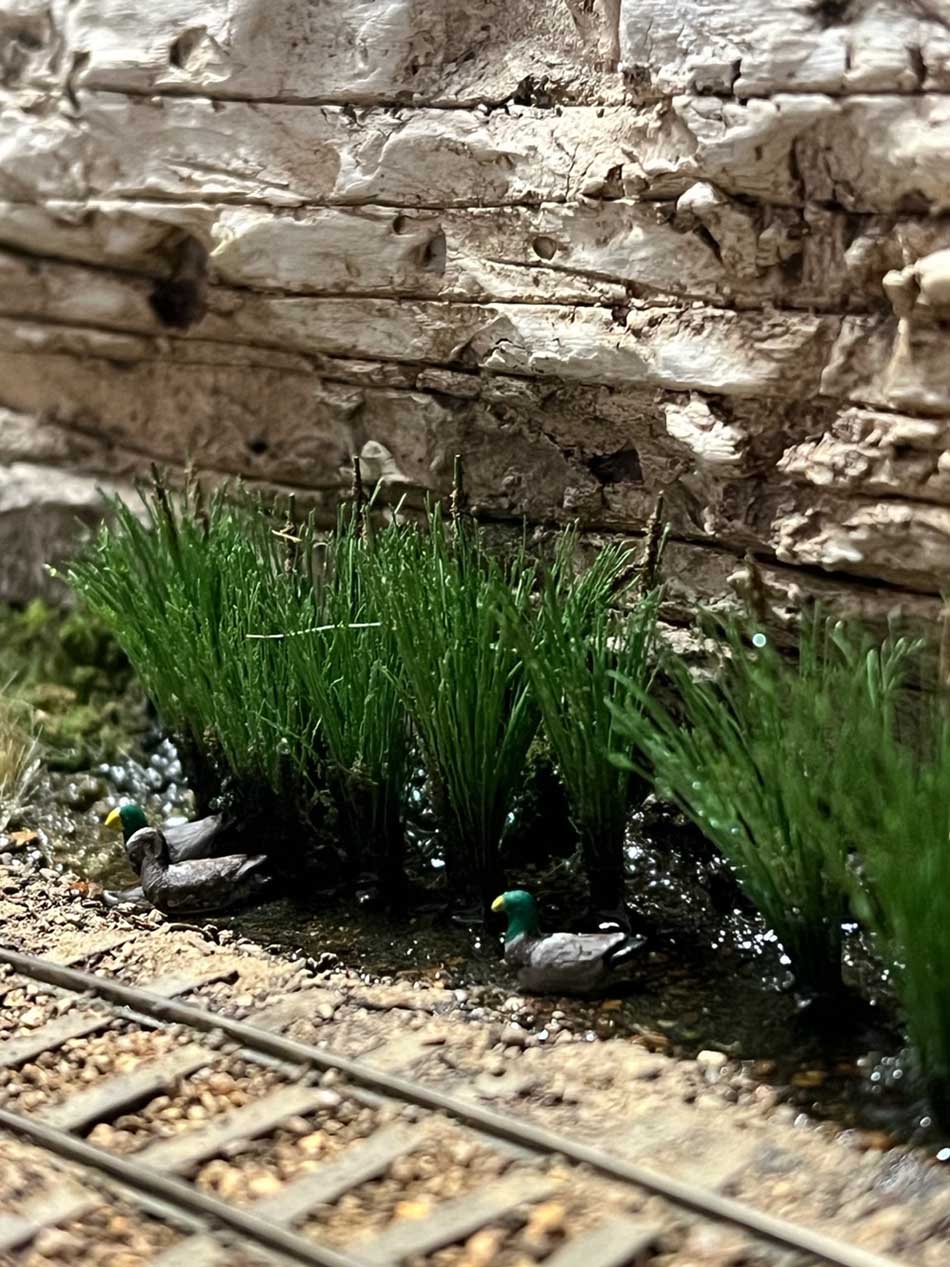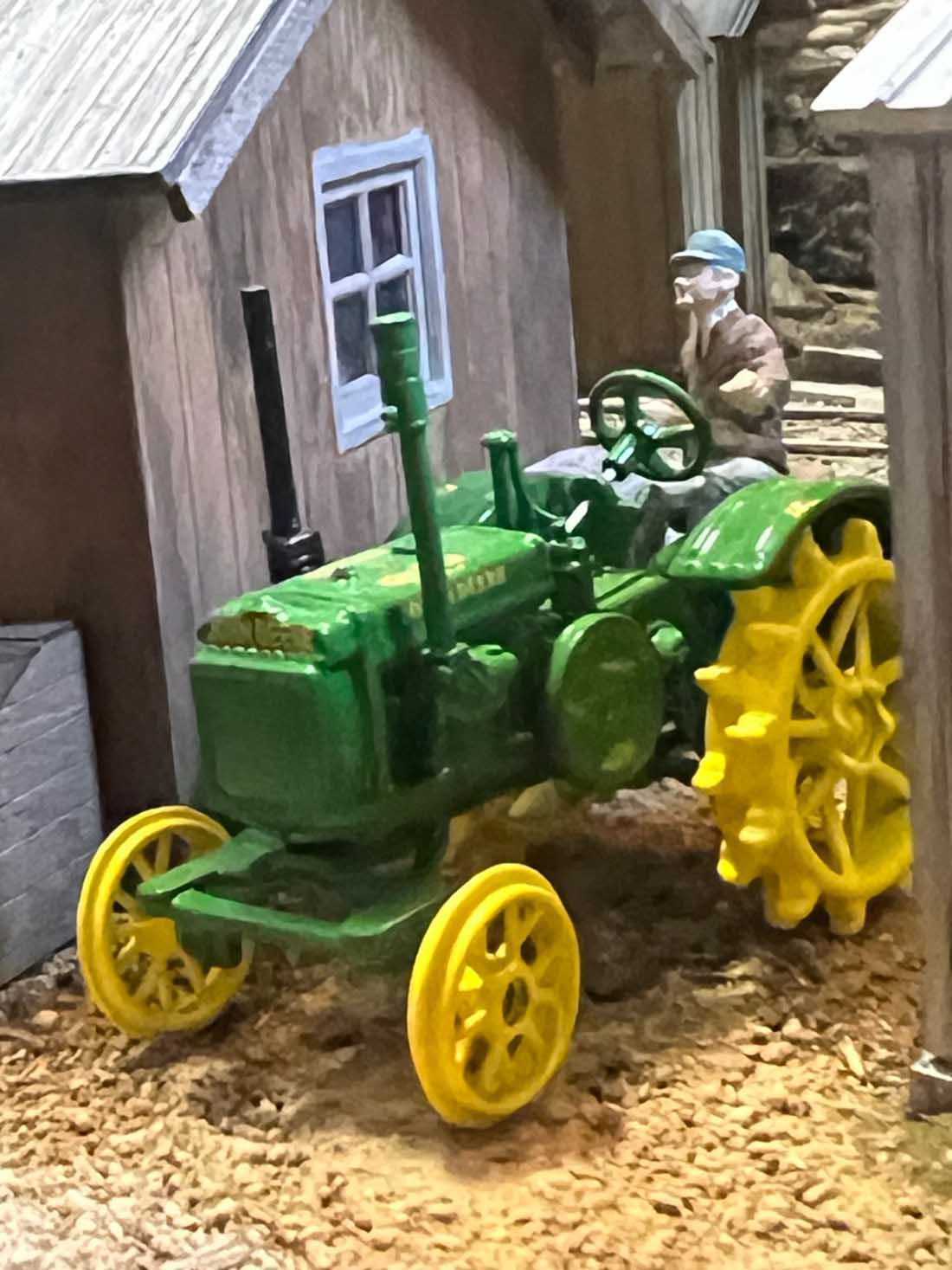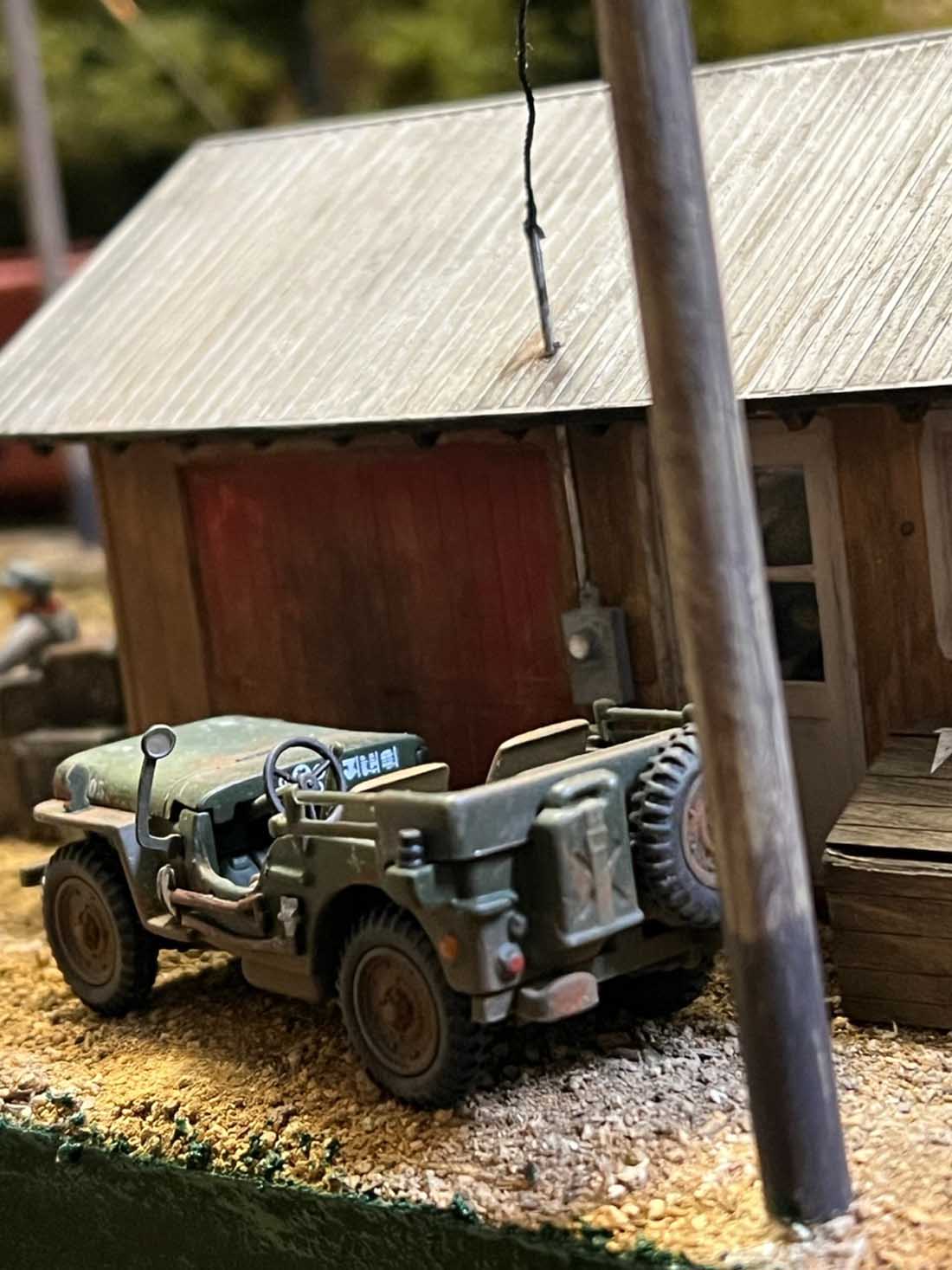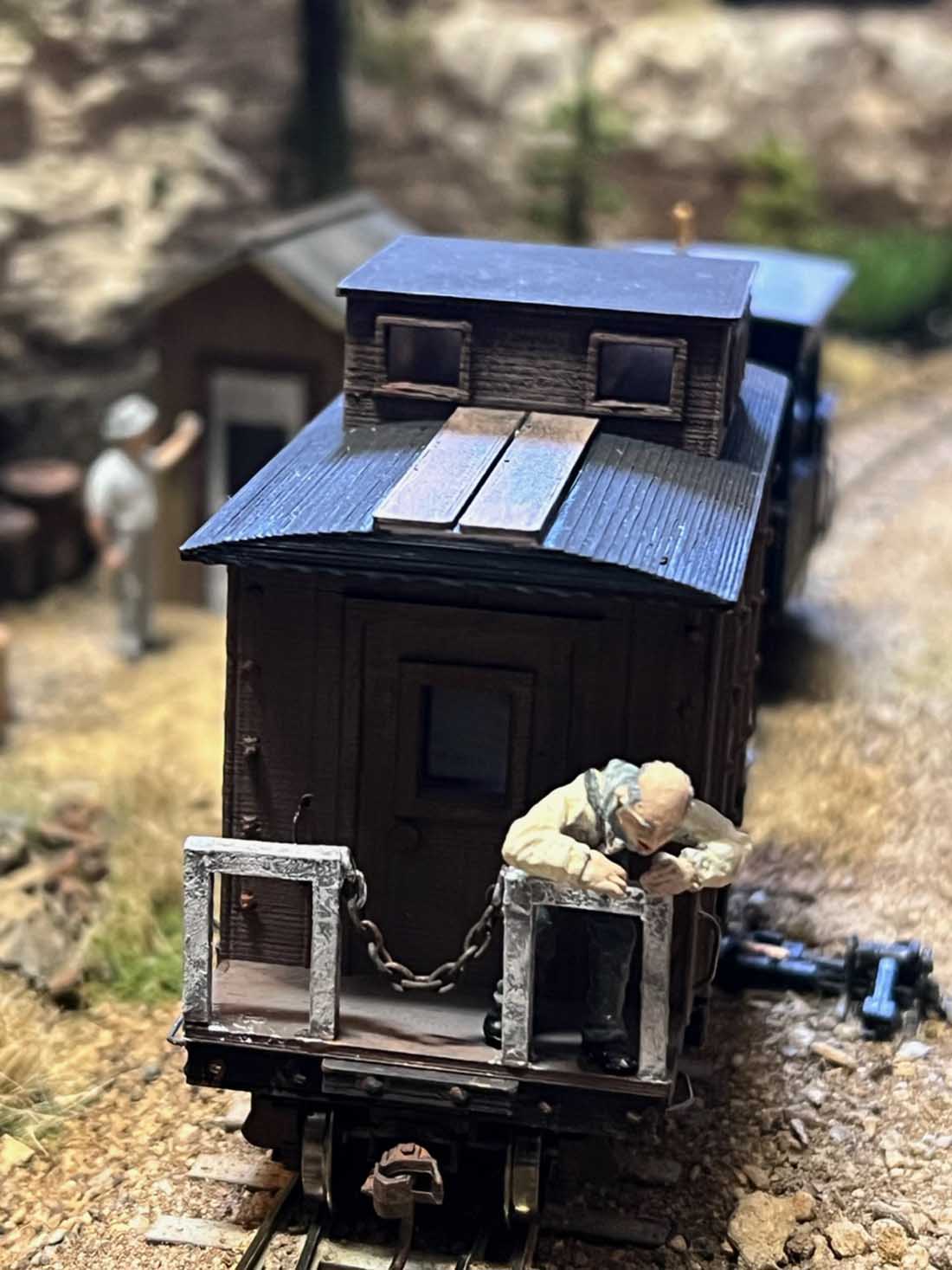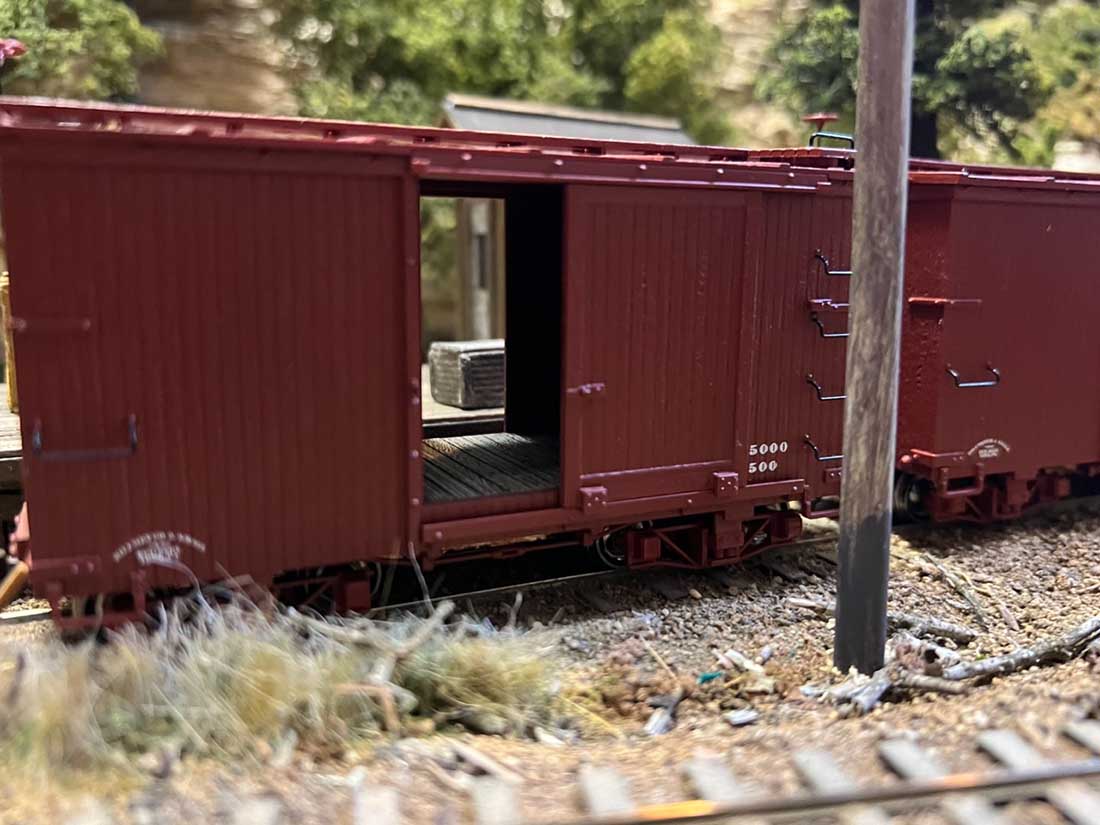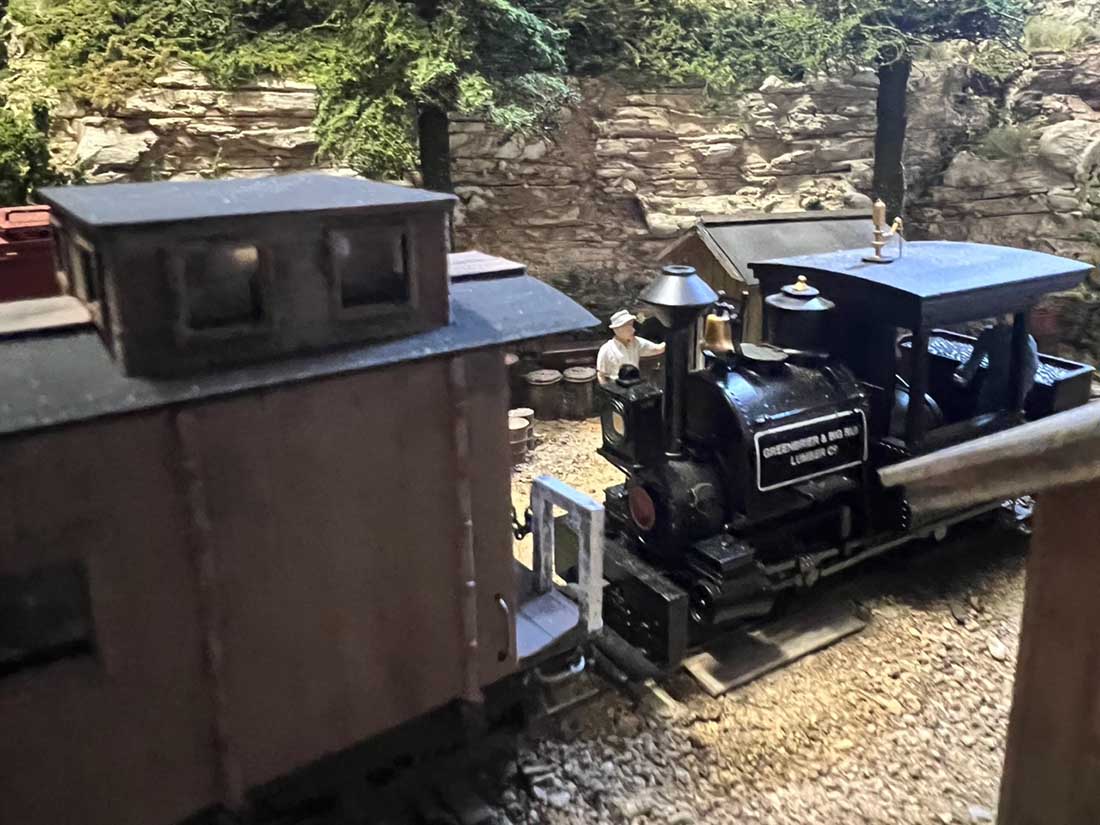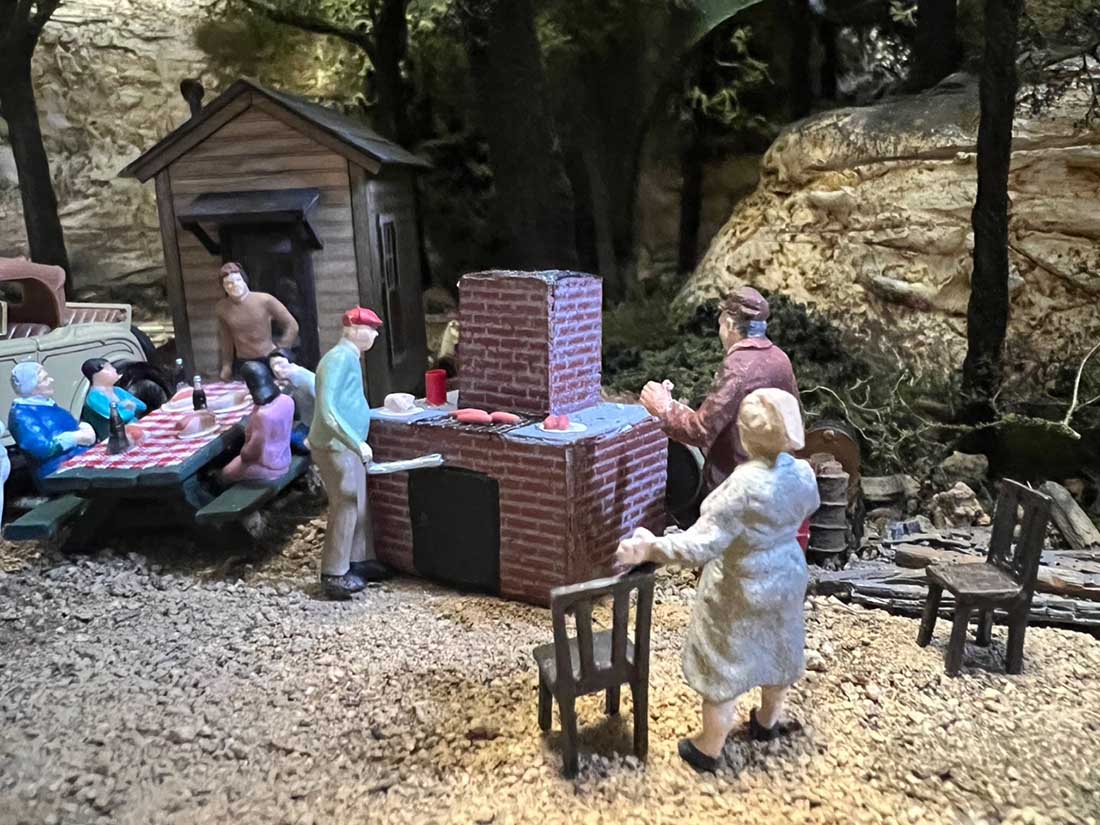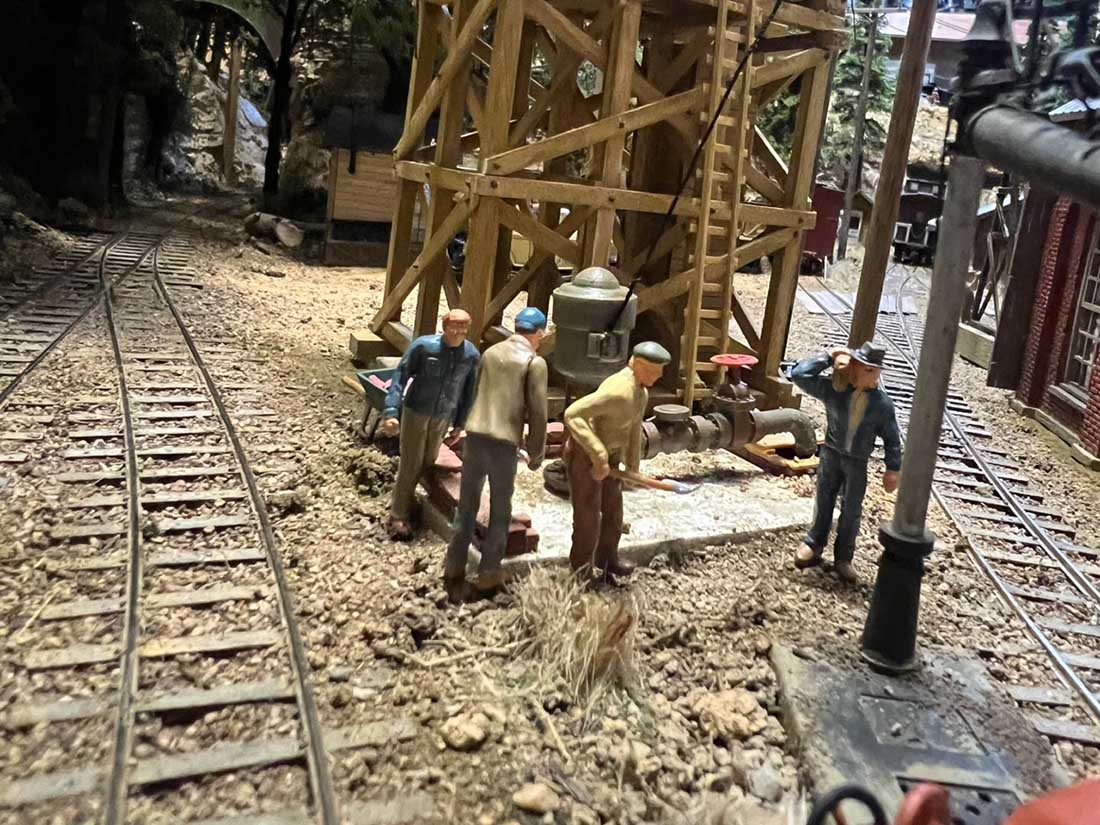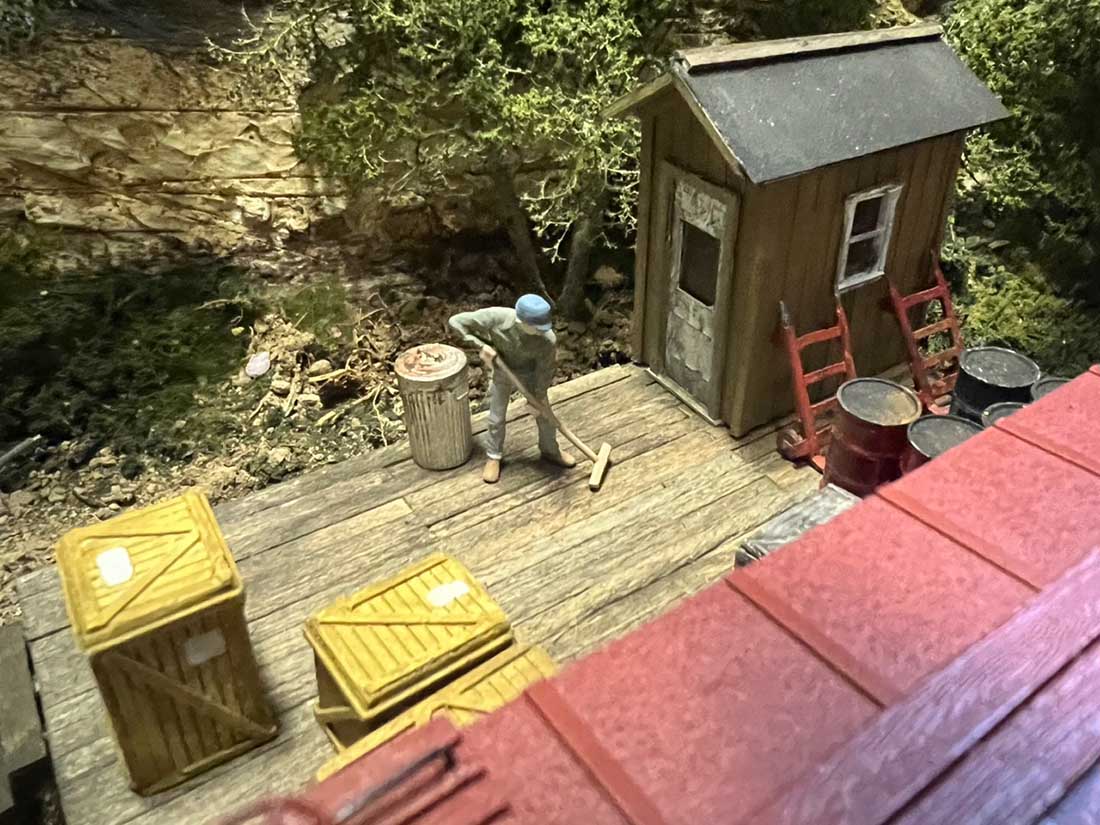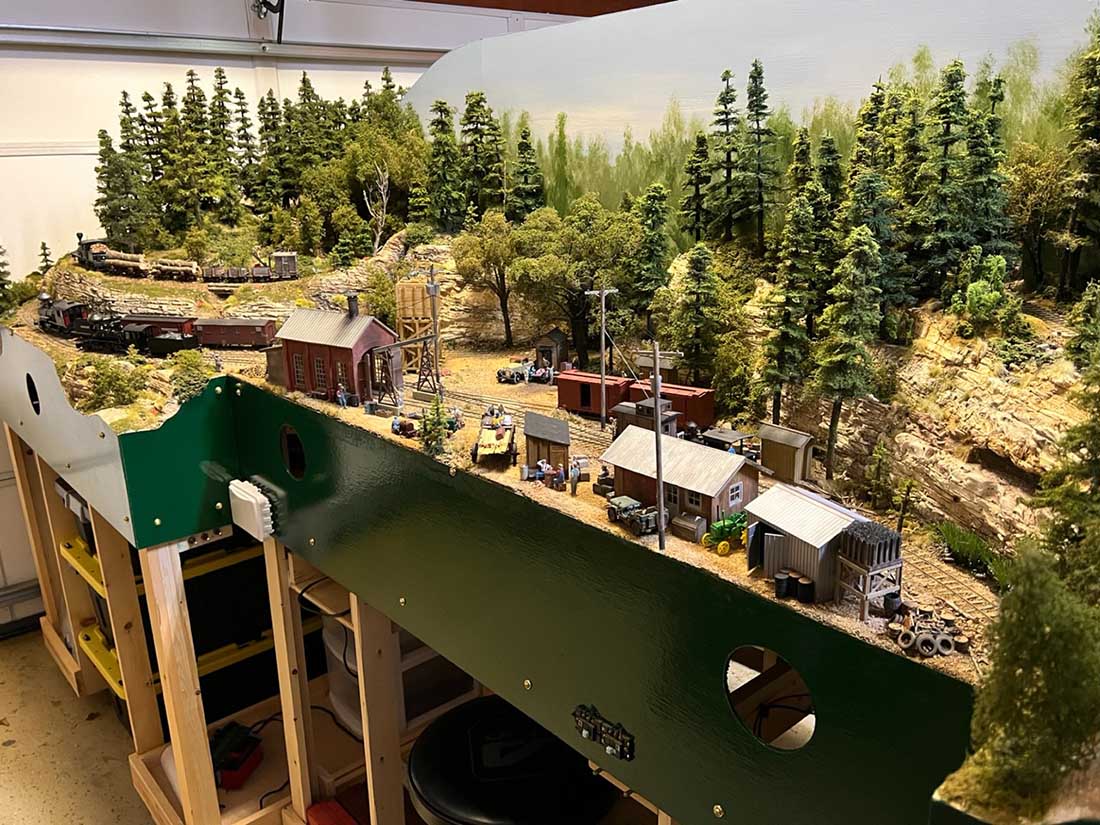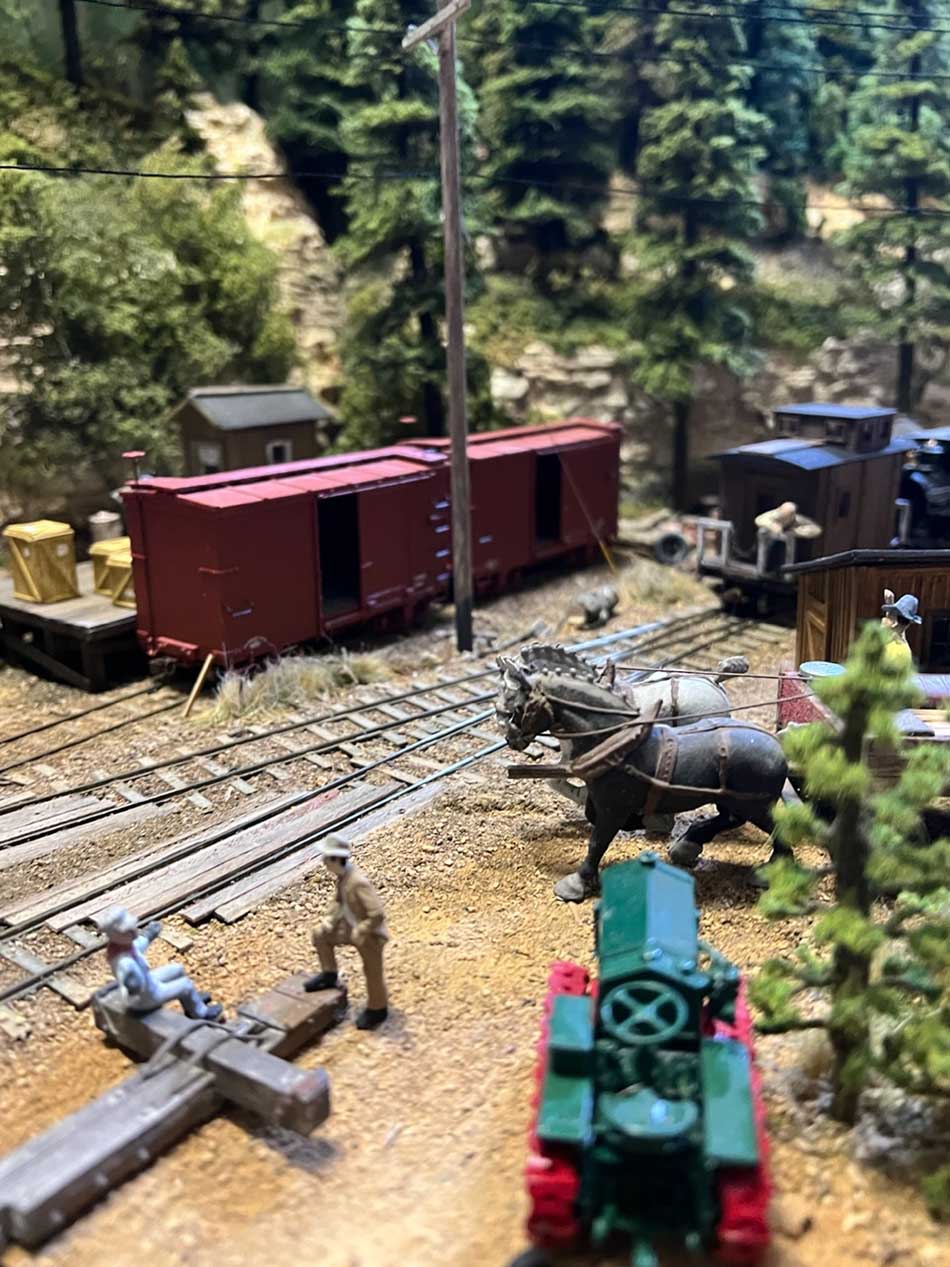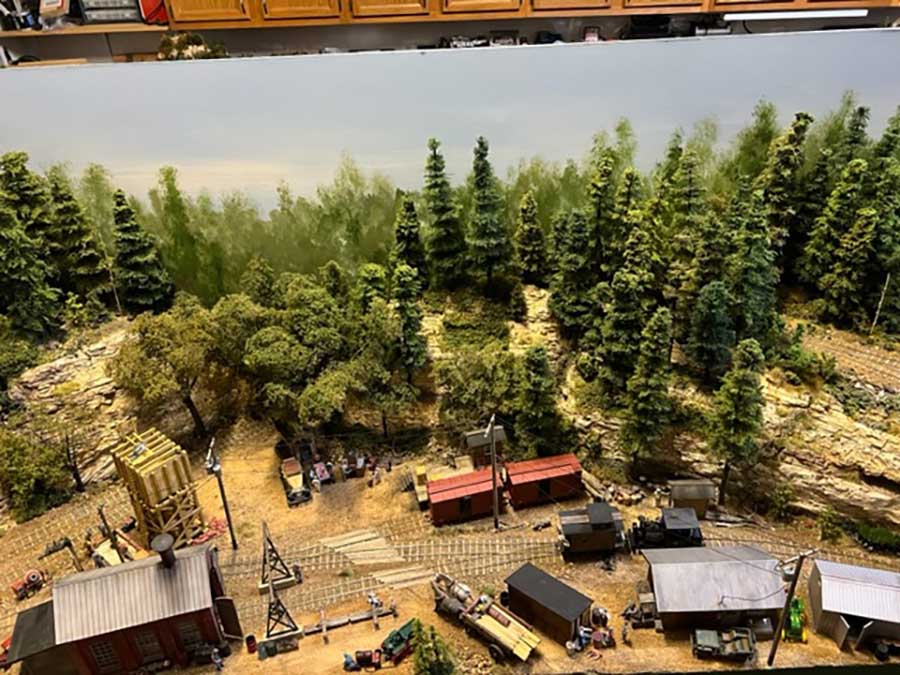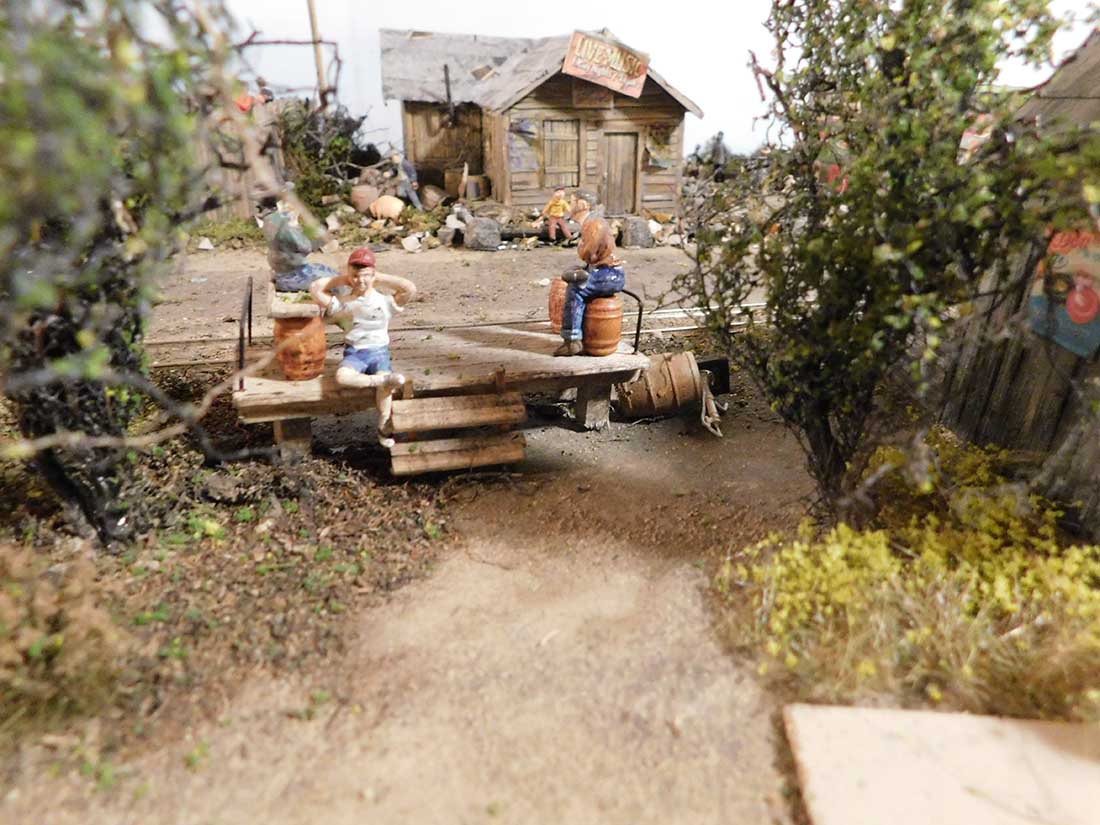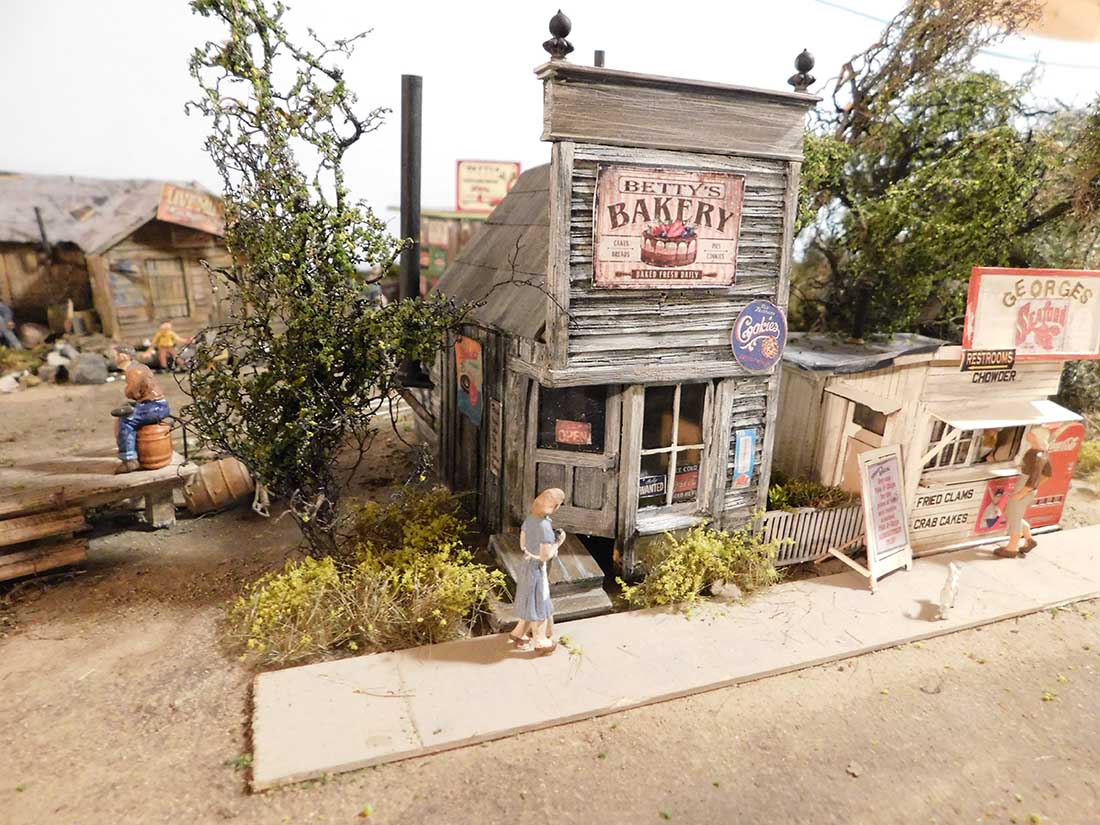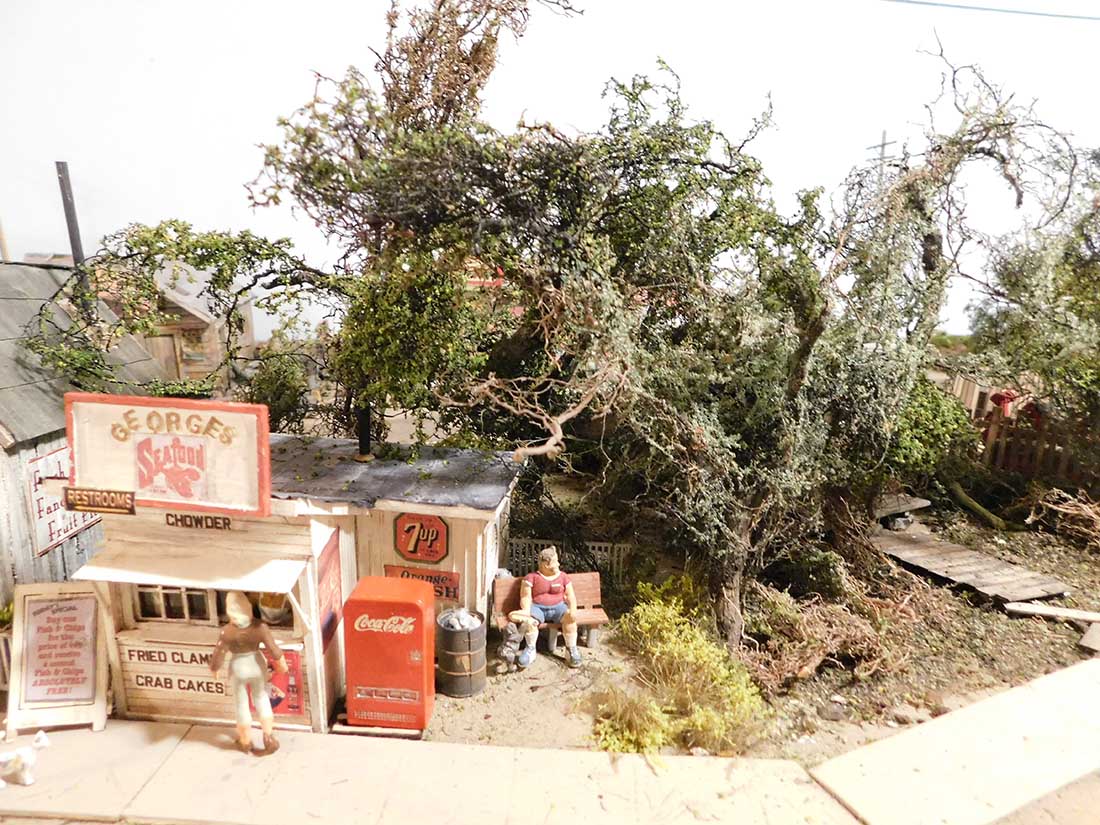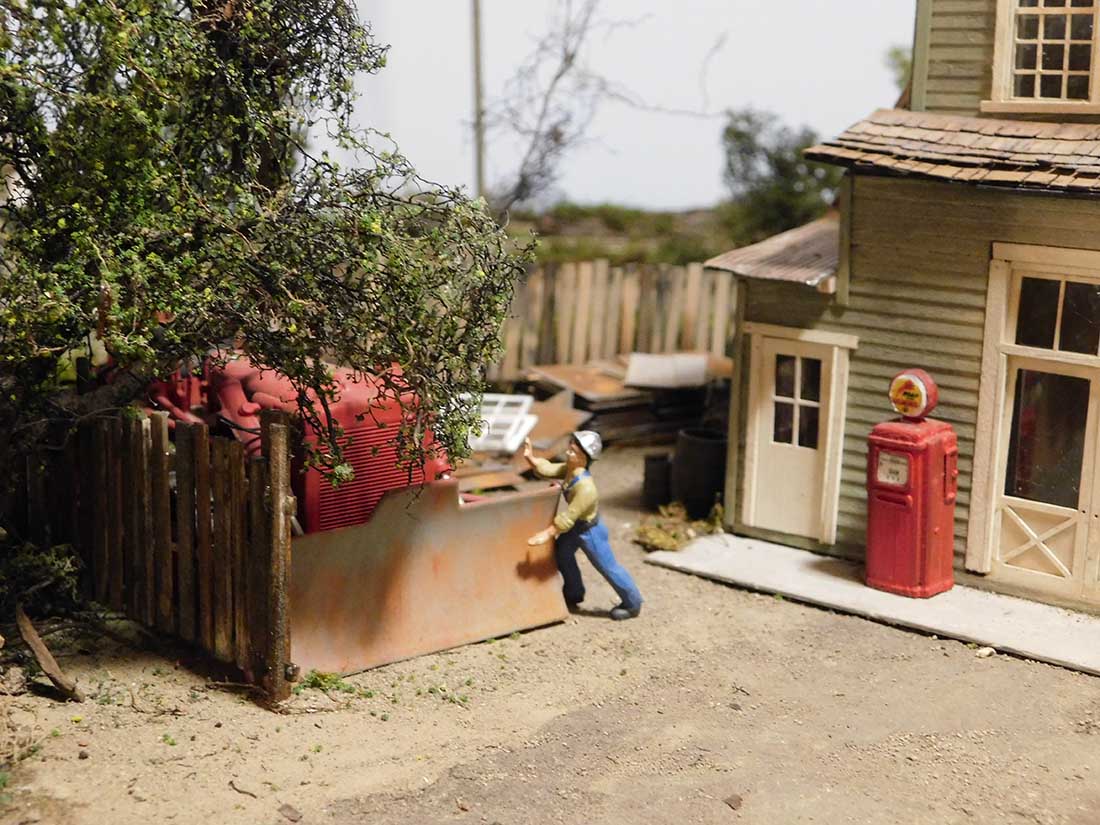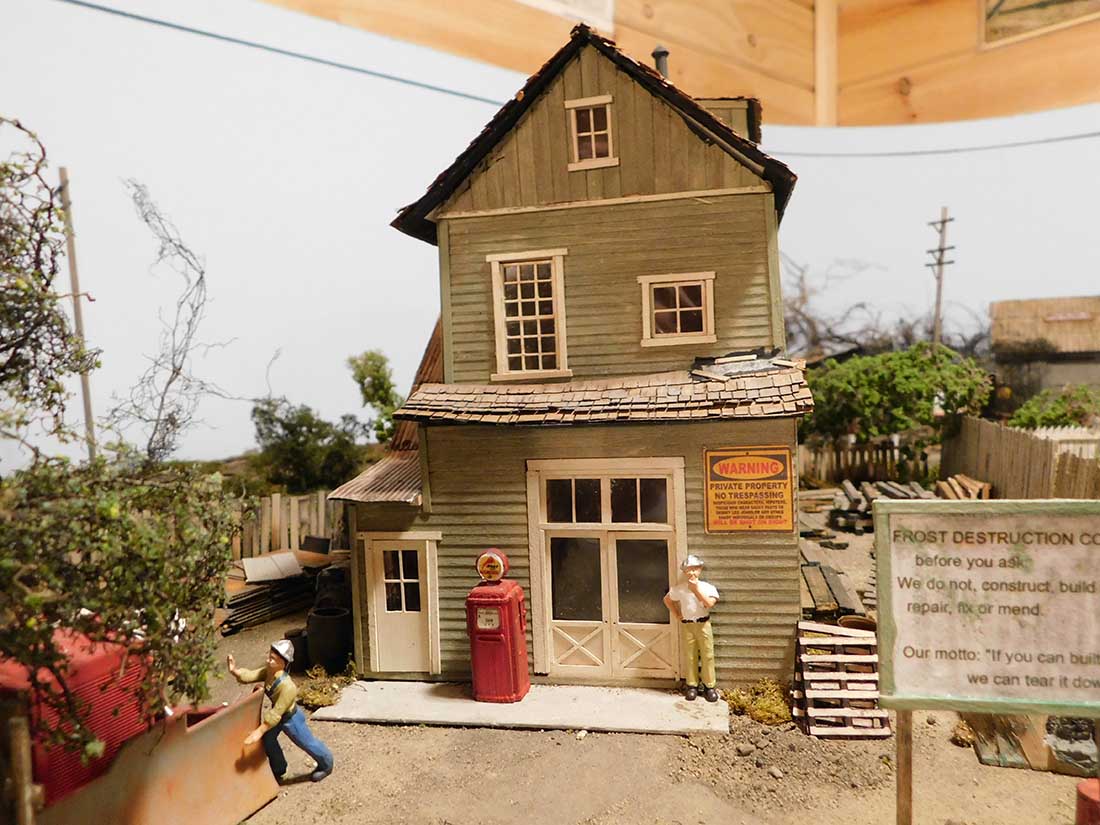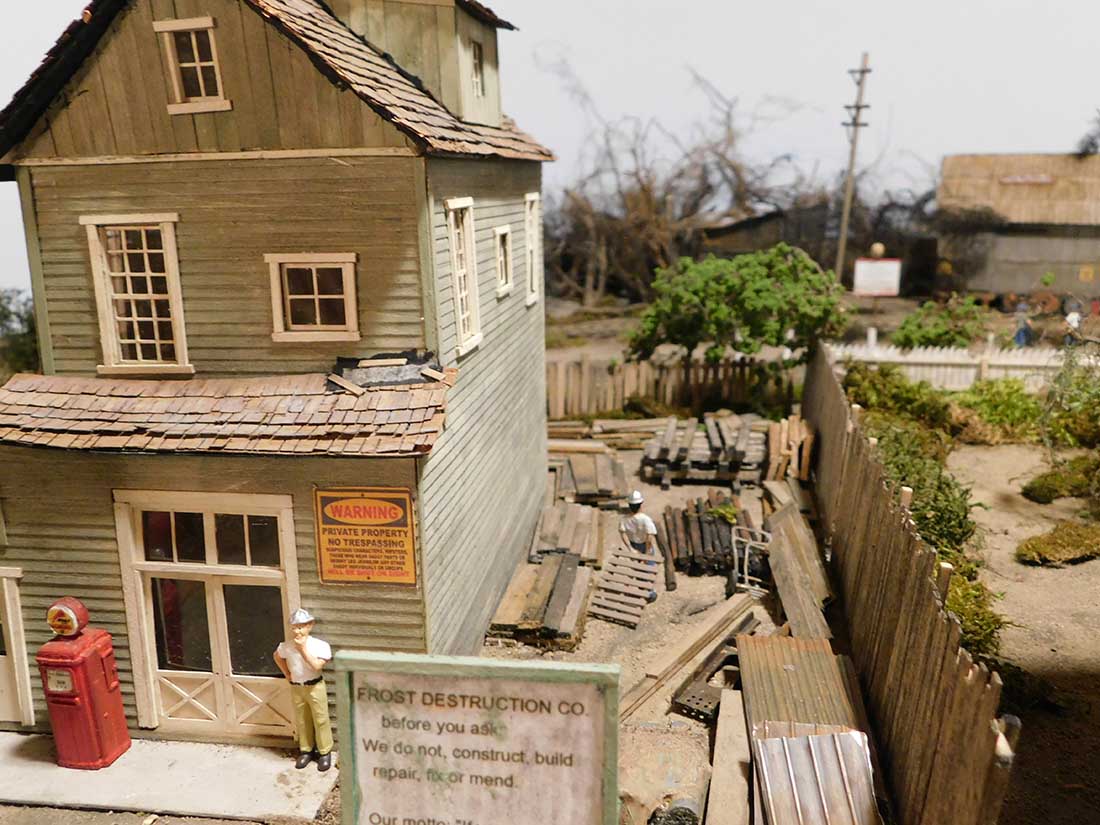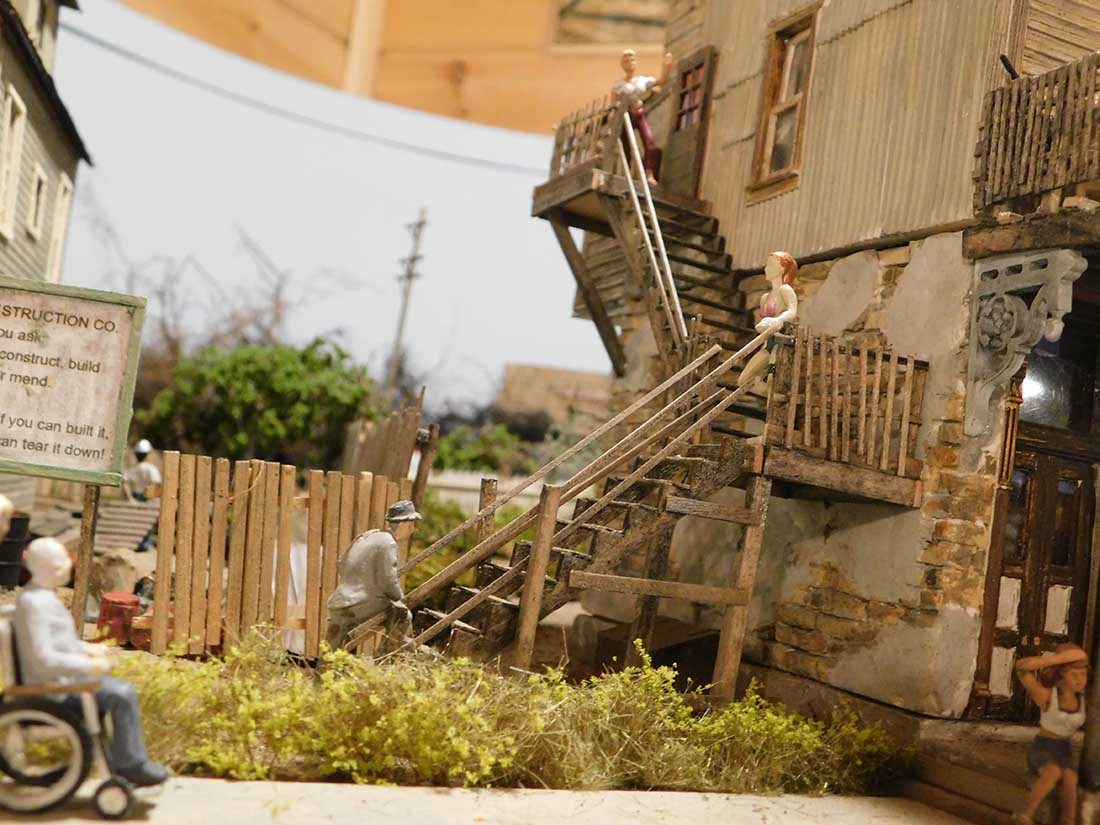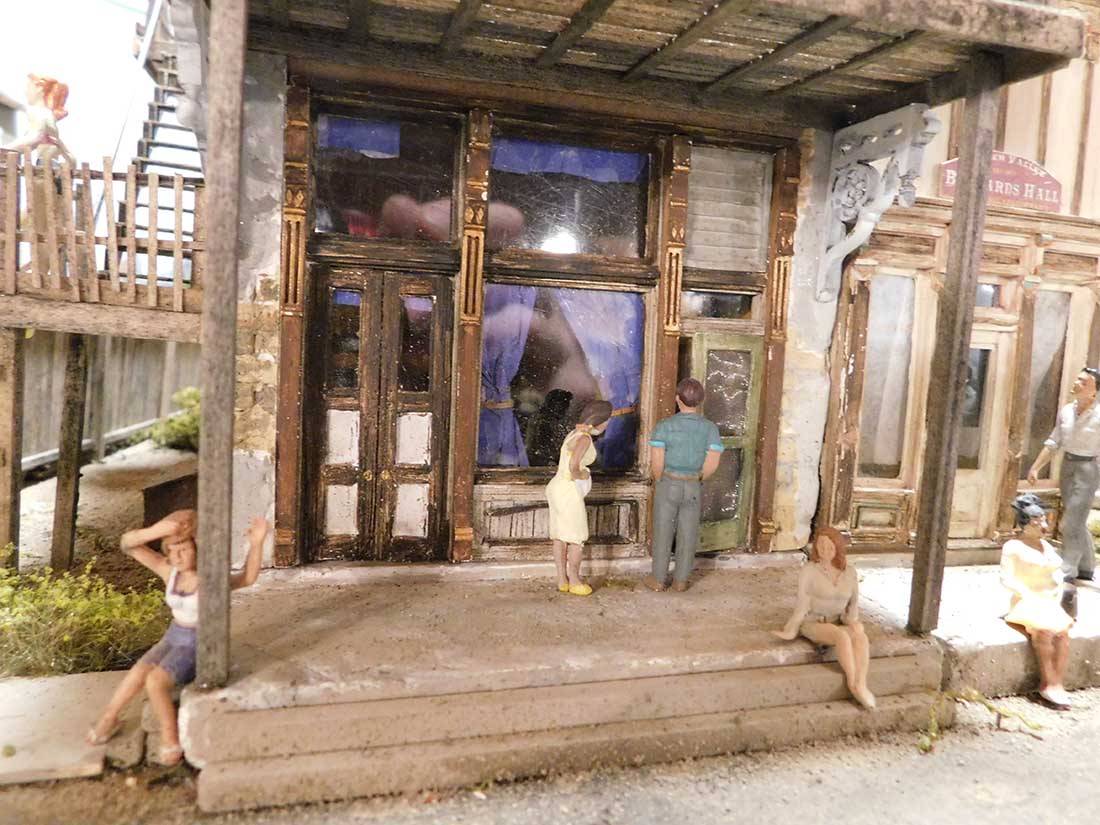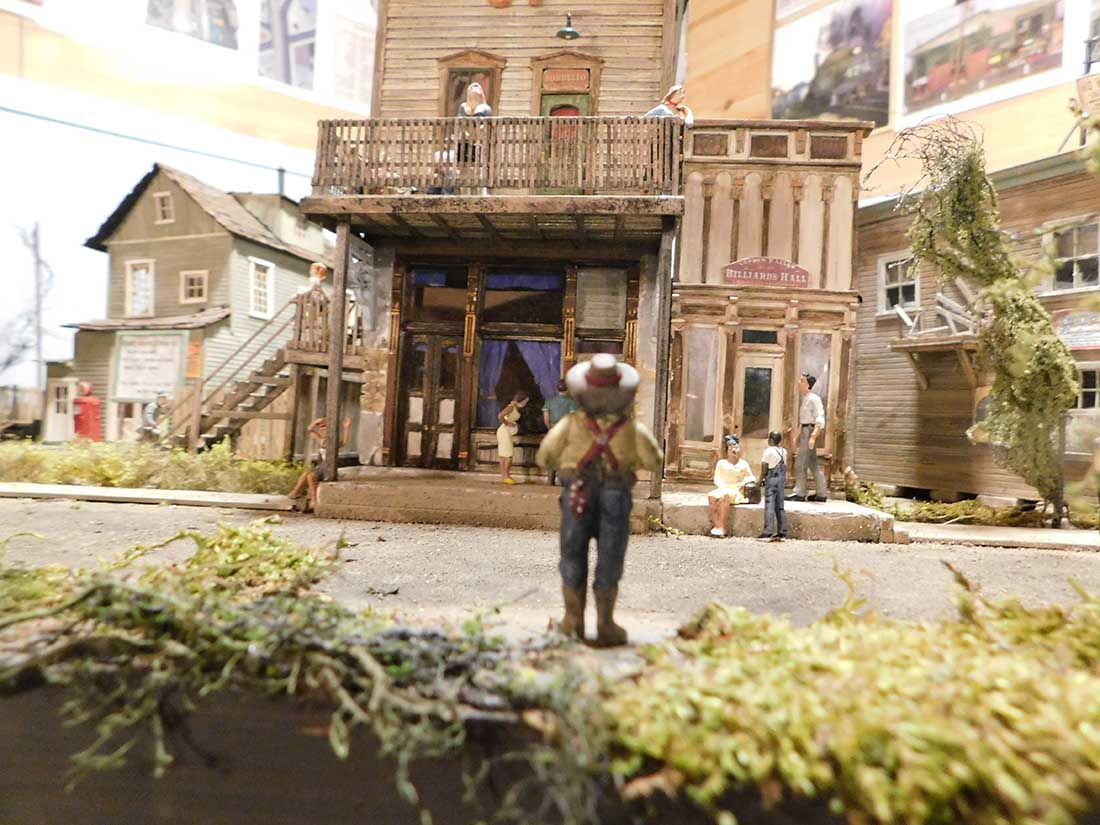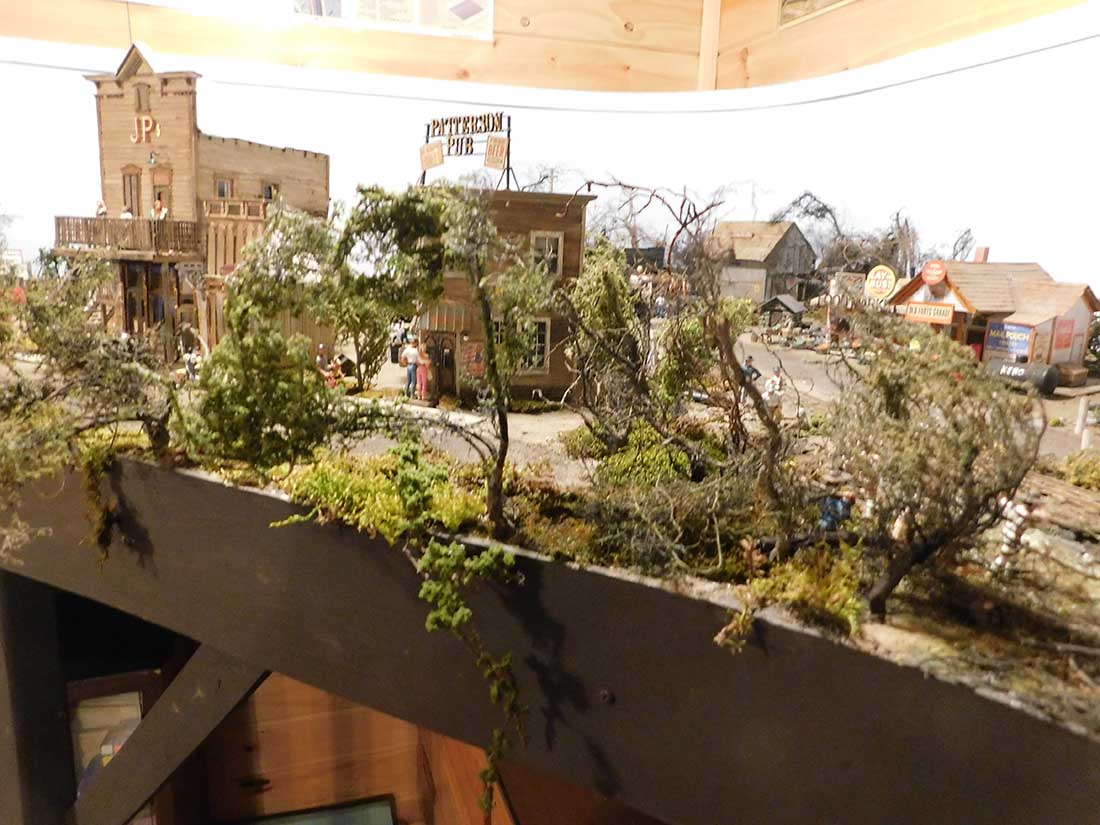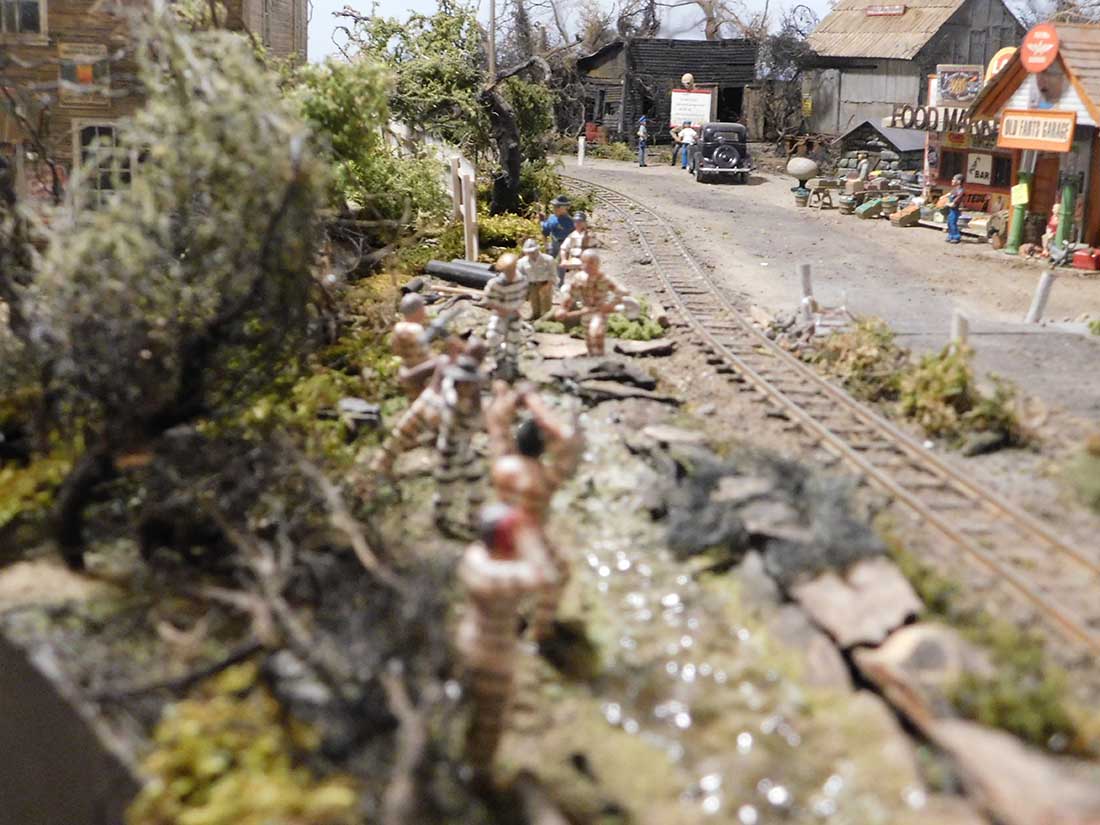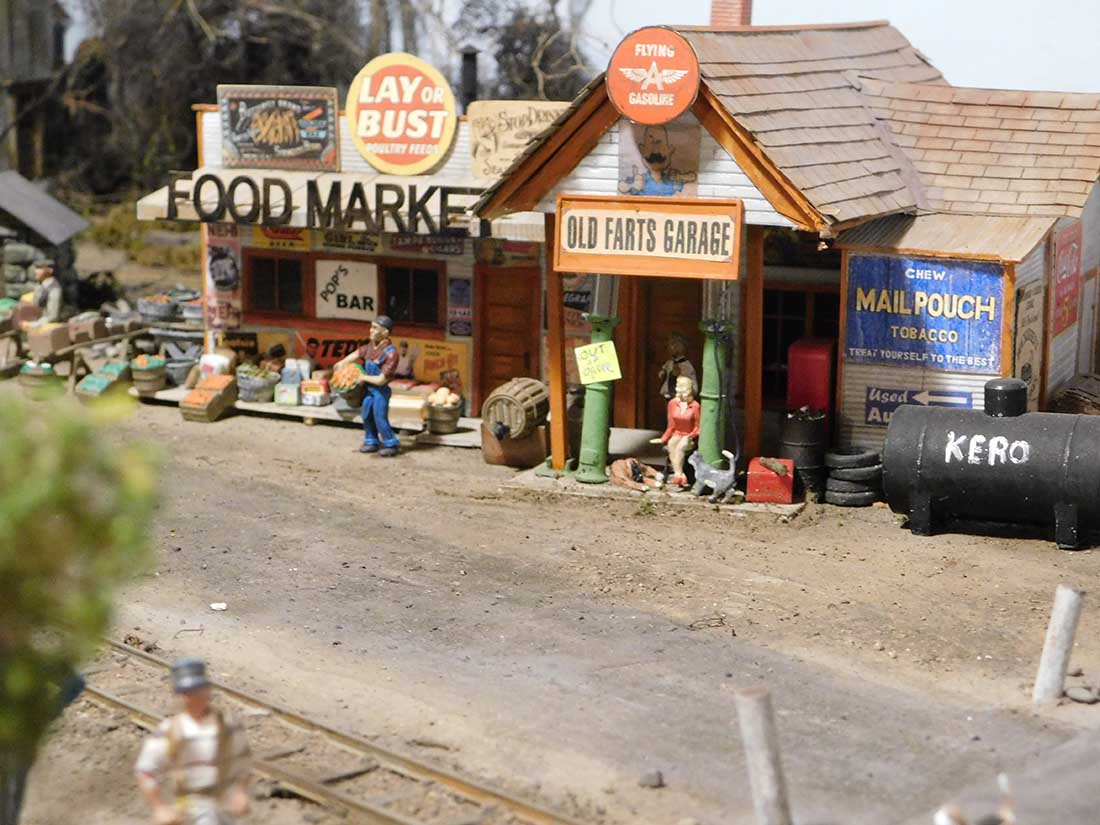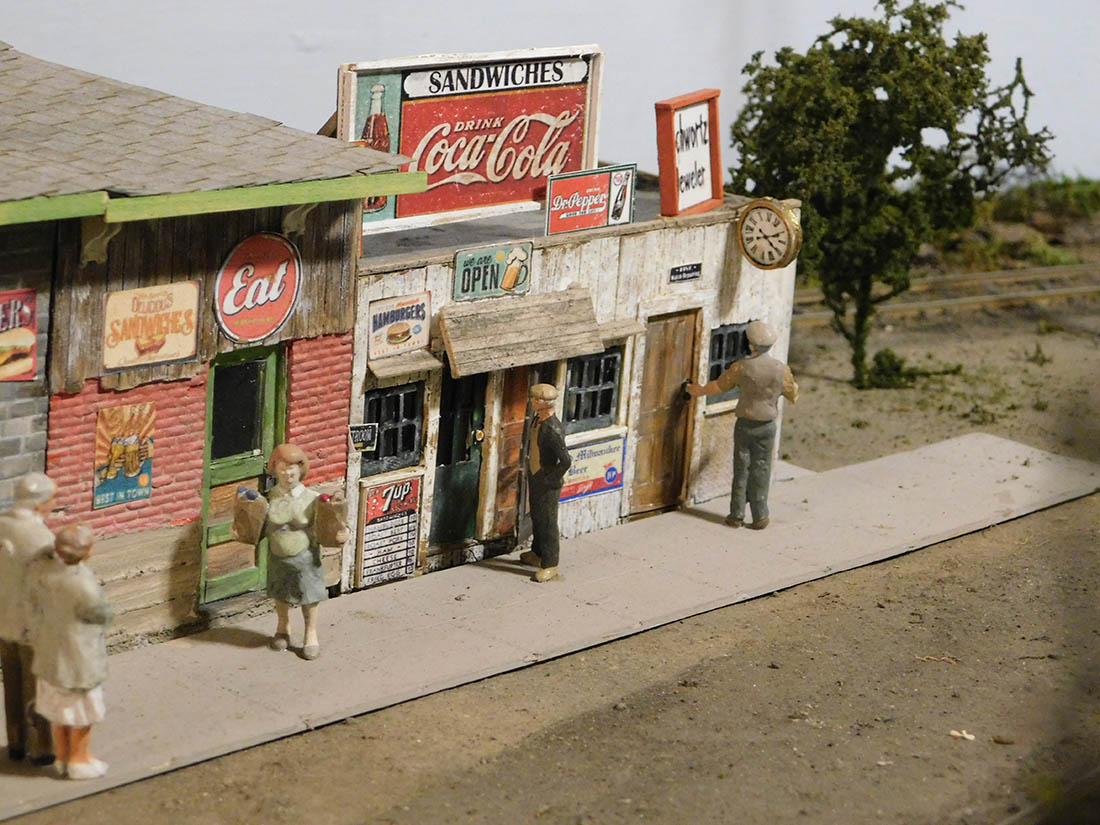Dean’s been in touch with an interesting post on N scale weights.
Changing couplers, wheels and weighing your rolling stock may seem like a bit of faff, but I suspect it’s the difference between a smooth running layout and a derailing one.
Please do leave a comment on this one, would love to know what you all think:
“Cheer’s Al, from Dean in New Mexico.
As anyone who follows the progress on my layouts may have guessed, I tend to be cheap, buying low priced cars, then fixing them up.
All my freight cars were bought in two parts: a Bachmann train set (the Bachmann “Golden Spike” set with two engines, four cars, track and a DCC controller—no longer available) and two sets of multiple freight cars from overstocked dealers.
I’m not a prototypical modeler and the only visitors to my trains are grandchildren who don’t care how they look, just how fast they run.
But with the low-priced freight cars, I’ve had lots of trouble keeping the rolling stock on the tracks. It was more a question of seeing which set of cars could make up a train that could make it around the layout without derailing.
I decided to do something about it and to tune up my freight cars.
The first thing was to use a consistent set of couples and wheel sets.
Here is a photo of some of the couplers and wheelsets that were on the cars. As you can see, they are all different and some don’t even couple consistently.
Although I prefer metal wheels, they tend to bump over turnouts, so I’ll stick to plastic wheels for now.
Here are the couplers and wheel sets, bought from China, that I’m standardizing on. They come in a box of a dozen sets which for around $15 can be purchased on eBay (search for “N Scale 1:160 Roller bearing Truck Coupler 33″ Plastic Wheels”). I’m with time converting all my stock to this wheel set.
Next, I correctly added weights to my cars. The NMRA (National Model Railroad Association) sets the standard weight of an N-scale car at 0.5 oz plus 0.15 oz for each inch of car length. Here is a table with the results for various car lengths from 2.5” to 5”
I bought a small digital scale (from Amazon) and started to weigh my cars.
A 50-ft boxcar weighed 0.56 oz; it should have been 1.06 oz. This is typical of all my cars, way underweight. I’m mostly using ¼-20 nuts as weights. This car took five nuts to increase its weight to the correct value. The nuts are attached with a few drops of super glue.
When done, the car was actually right on.
I don’t recommend buying tin-lead solder now, as it’s much more expensive than in the older days, but, if you have a roll of solder in your toolbox, you can melt a blob of it until you get the correct weight.
The same number of ¼-20 nuts was needed for a 40-ft boxcar, coming in close to the recommended value.
My set of open gondolas each took four ¼-20 nuts. I attached them with super glue to pieces of cardstock so that I could remove them if needed.
The long tanker is a problem. It’s grossly under weight (0.4 oz rather than 0.99 oz). Any place I put it on a train other than the rear car would lead to derailment.
Other modelers have suggested that you can snap the bottom of the tank apart from the top to add weight, but I haven’t been able to do that.
I’m trying to come up with some kind of liquid that I could squirt into the car then allow it to set up—maybe liquid epoxy. Any ideas from readers would be appreciated.
The caboose needs one more nut to make the correct weight.
For more information on my techniques and for some shots of running trains with the tuned-up cars, see
Thanks, Al, for all you do and thanks to my viewers! I appreciate all the support.
Dean”
A big thanks to Dean for sharing his N scale weights and wheels info.
Please do leave a comment if you can help Dean with his adding weight with a liquid.
Hope you enjoyed Bill’s pics and vid – he really is the gift that keeps giving.
That’s all today folks.
And if you’d like to feel the warm glow of supporting the blog, the Beginner’s Guide is here.
Best
Al
PS More HO scale train layouts here if that’s your thing.
Need buildings for your layout? Have a look at the Silly Discount bundle.
